Are you a secondary social studies teacher about to start a unit on the Second Industrial Revolution? Are you wondering to yourself, “What are engaging and fun ways to teach the Industrial Revolution?” If the answers to both of these questions are “yes,” you’ve stumbled upon the right place! I’ll walk you through how to teach this topic using Second Industrial Revolution primary sources. Using primary source documents is a great way to engage students in reading, writing, and thinking about history!
In my classroom, I created an inquiry-based lesson for the Second Industrial Revolution. If you need a rundown on inquiry based learning, check out my blog on inquiry based lessons!
Now let’s get to the nitty gritty!
Focus question for Second Industrial Revolution Lesson
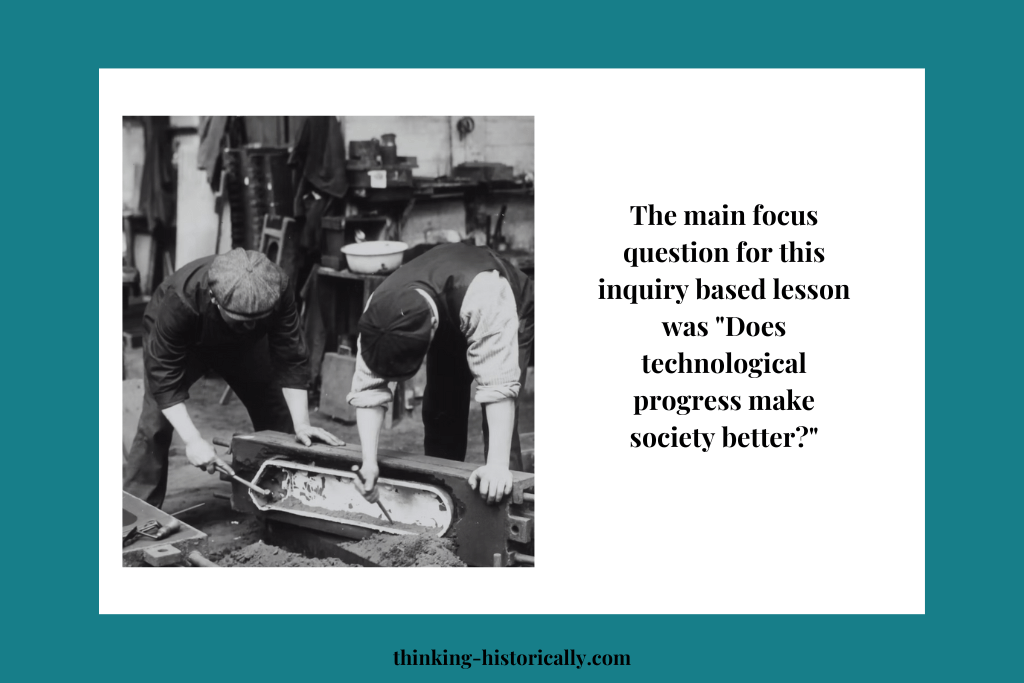
A captivating inquiry-based lesson starts with a captivating focus question! The main focus question that I used for my Second Industrial Revolution lesson plan was, “Does technological progress make society better?” I personally enjoy this question because many students have access to technology like smartphones and laptops. This question gets them interested in the topic and makes the unit feel relevant to them. At the end of this inquiry lesson, students have the opportunity to answer the main focus question and use evidence to support their claims. You may be wondering, but how do they actually answer the main question? Through supporting questions!!!
What are supporting questions?
You might be wondering, what are supporting questions? Well, supporting questions are questions that lead up to the main question and help to break up the inquiry lesson into manageable chunks. For instance, in my Second Industrial Revolution lesson, my first supporting question was, “What impact did technological progress have on the economy?” This question gave students the opportunity to start thinking about how technology either helped or didn’t help the economy. To investigate this first supporting question, I had students analyze the following primary source documents:
- Pierre Emile Levasseur, In Praise of Mechanization (1897)
- Adna Weber, The Growth of Cities in the Nineteenth Century (1899)
- George Rice, An Oilman Goes Bankrupt (1899)
When choosing primary or secondary source documents, it is important to choose sources that give students a wide range of perspectives.
Supporting question 2!
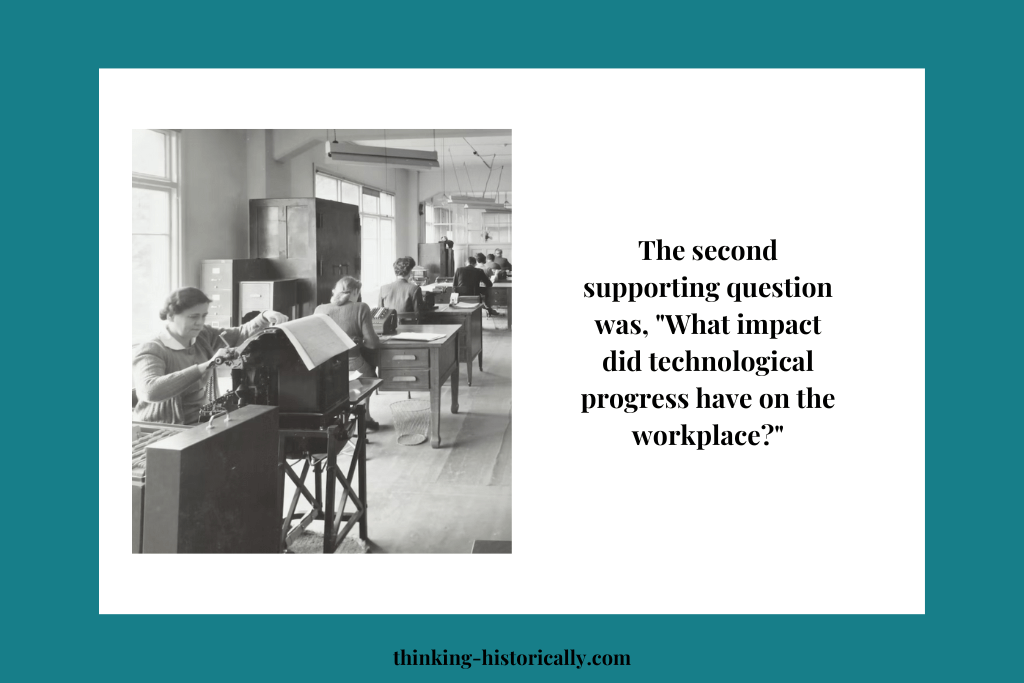
The next supporting question that I used for my lesson was “What impact did technological progress have on the workplace?” I enjoy this question because it gives students the chance to see how the lives of workers changed due to the Industrial Revolution. Some awesome primary source documents that students can analyze for this supporting questions are diary or journal entries and worker interviews. For this supporting question, I used the following sources:
- Sadie Frowne, The Life of a Sweatshop Girl (1902), Samuel Gompers
- What does the worker man want? (1890)
- Jane Adams on New Immigrants (1910)
- Upton Sinclair’s, The Jungle (1906)
Supporting question 3!
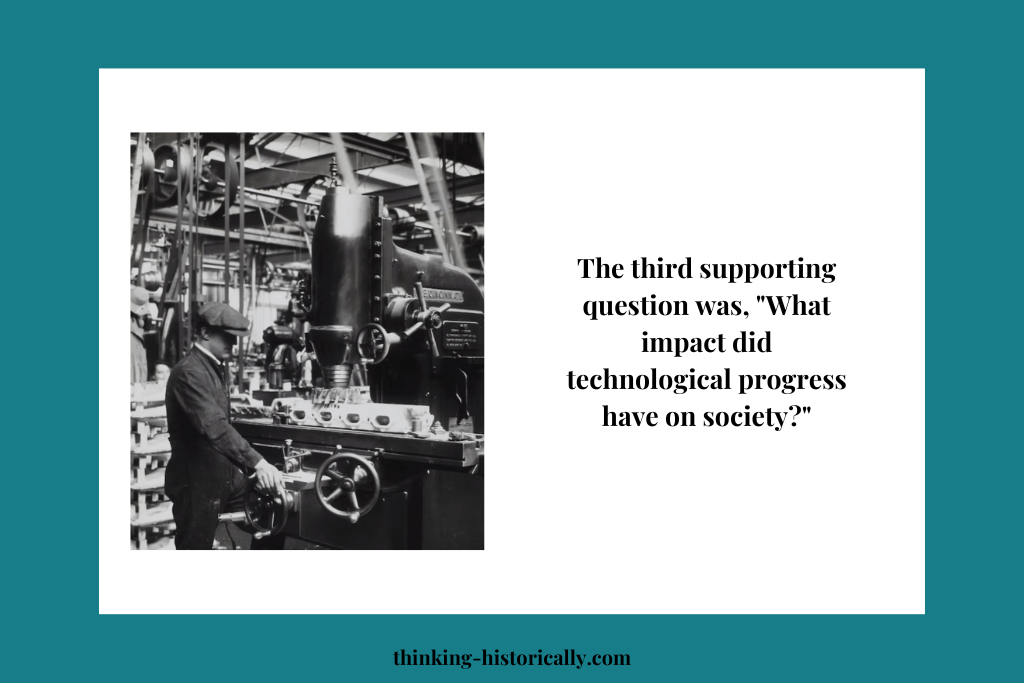
The third and last supporting question that I used for the Second Industrial Revolution was “What impact did technological progress have on society?” I chose this question because it gets students thinking about society as a whole. For this supporting question, I used the following sources:
- Andrew Carnegie, The Gospel of Wealth (1889)
- Henry George, Progress and Poverty (1889)
- Theodore Dreiser, Sister Carrie (1900)
Tying it all together!
After students have had a chance to analyze all the documents for each supporting question, they then complete a written response where they answer the main focus question, “Does technological progress make society better?” When answering this question, students must write 3-4 paragraphs and at least 3 pieces of evidence to support their claim.
If you’re interested in purchasing my inquiry-based lesson on the Second Technological Revolution, click here! But feel free to make your own using this guide in order to fit the needs of your students! You can also check out my store for other secondary social studies and history teaching resources!
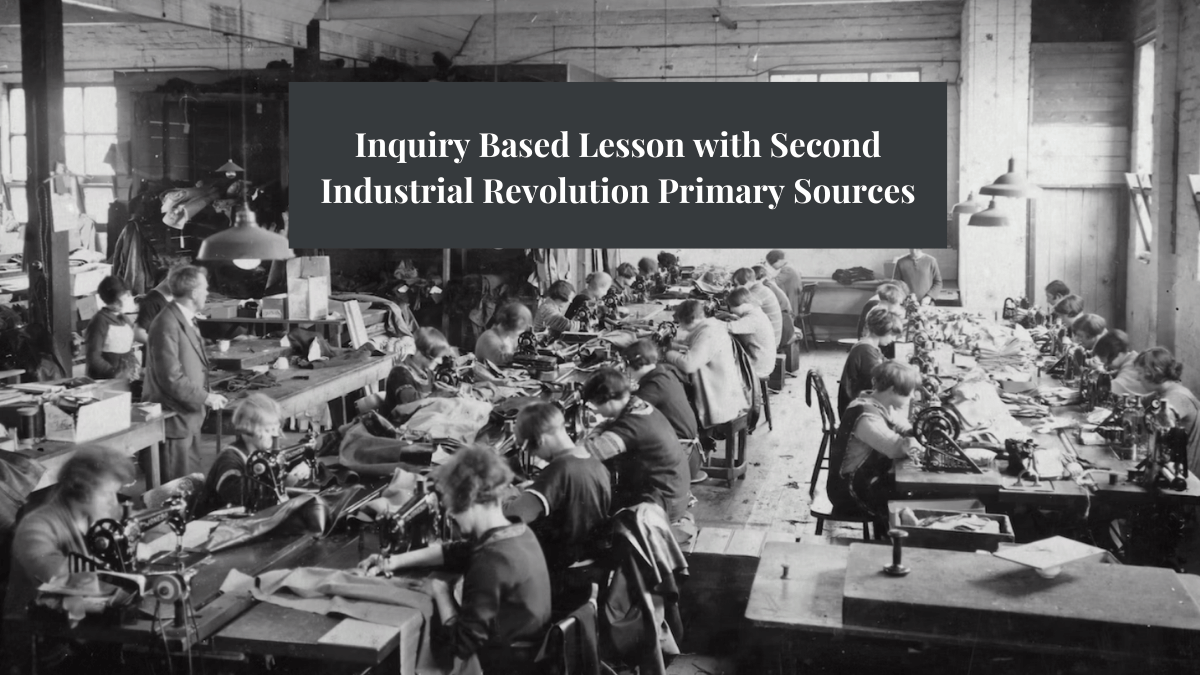

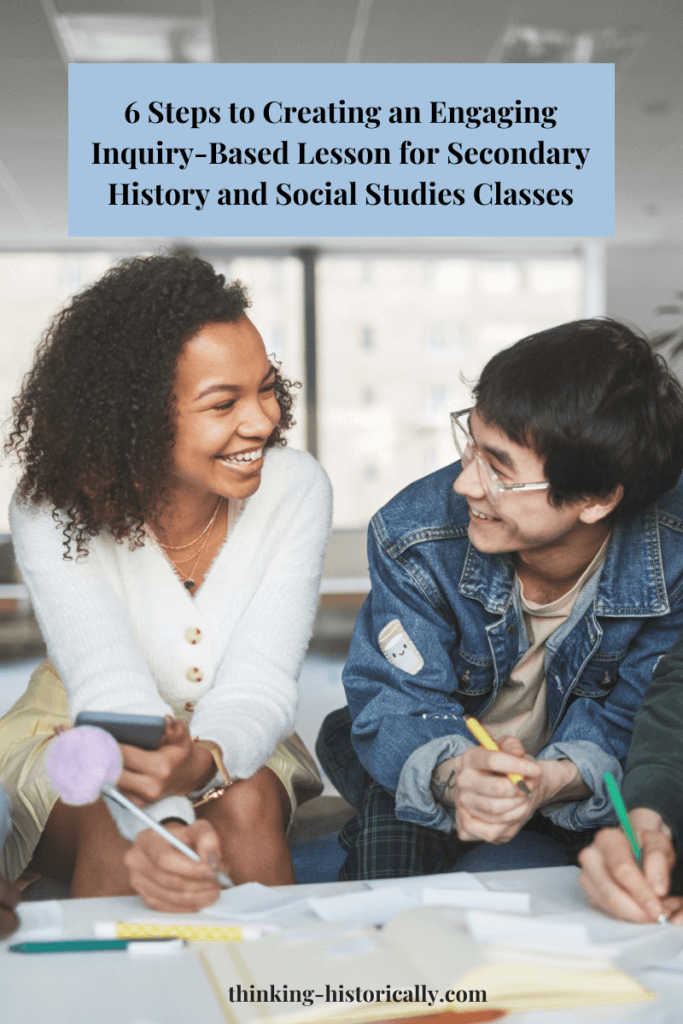
One Response